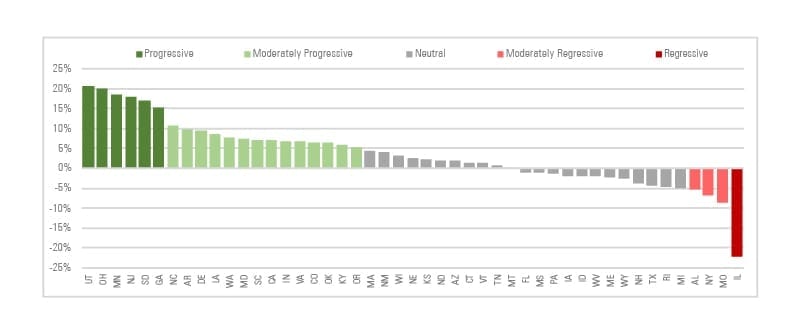Funding Gaps 2018
An Analysis of School Funding Equity Across the U.S. and Within Each State
School districts that serve large populations of students of color and students from low-income families receive far less funding than those serving White and more affluent students. And despite widespread attention to inequitable school funding formulas — and courts that have declared them unlawful for shortchanging school districts serving large percentages of low-income students — too many states continue this unfair practice.
School Funding by Students of Color
In the U.S. today, school districts serving the largest populations of Black, Latino, or American Indian students receive roughly $1,800, or 13 percent, less per student in state and local funding than those serving the fewest students of color. This may seem like an insignificant amount, but it adds up. For a school district with 5,000 students, a gap of $1,800 per student means a shortage of $9 million per year.

School Funding by Students from Low Income Families
For school districts serving the largest populations of students from low income families, the gap is smaller but no less significant. Across the country, the U.S. spends approximately 7 percent — or $1,000 — less per pupil on students educated in our nation’s highest poverty districts than those educated in the wealthiest. Again for a school district with 5,000 students, this totals to a $5 million short changing for our students who already have less.

“These funding inequities are not new; they have been documented for decades. The good news, and the reason we believe this analysis is so important now, is that more and more advocates, parents, educators, and district and state leaders are pushing for change. We hope this work serves as a tool for progress.” – Ary Amerikaner, director of P-12 resource equity
Is your state committed to education equity?
There is, of course, great variation among states’ school funding patterns. Nebraska stands out for its unfairness, spending nearly 25 percent less per pupil in districts serving the most students of color. And while in 14 states, districts that serve the most students of color receive substantially more money, in 14 other states, they receive substantially less.
Yet, there are many states that defy these patterns and show inequities are not inevitable. In Utah, for example, the highest poverty districts receive about 21 percent more state and local dollars per student than their lowest poverty counterparts. Other states where low-income districts get substantially more dollars include Ohio, Minnesota, New Jersey, South Dakota, and Georgia.

These figures, however, only indicate whether the school funding that high- and low-poverty districts receive is equal, not equitable. When we adjusted for the added costs of educating low-income students (e.g., high-quality early learning, wraparound services, and other student supports) and asked whether funding is equitable, the trends look far worse. Nationally, the funding gap between the highest and lowest poverty districts grows to $2,000 per student, or 16 percent. Moreover, the number of states that provide high-poverty districts with substantially less funding grows from four to 20.
For this report, we analyzed the most up-to-date national data sources available to examine the state of funding equity across the U.S. and within each state. The report looks at revenues from state and local sources only, excluding federal funds, since those dollars are intended — and targeted — to provide supplemental services to traditionally underserved groups. The study focuses on how states allocate the resources that originate from their coffers.
